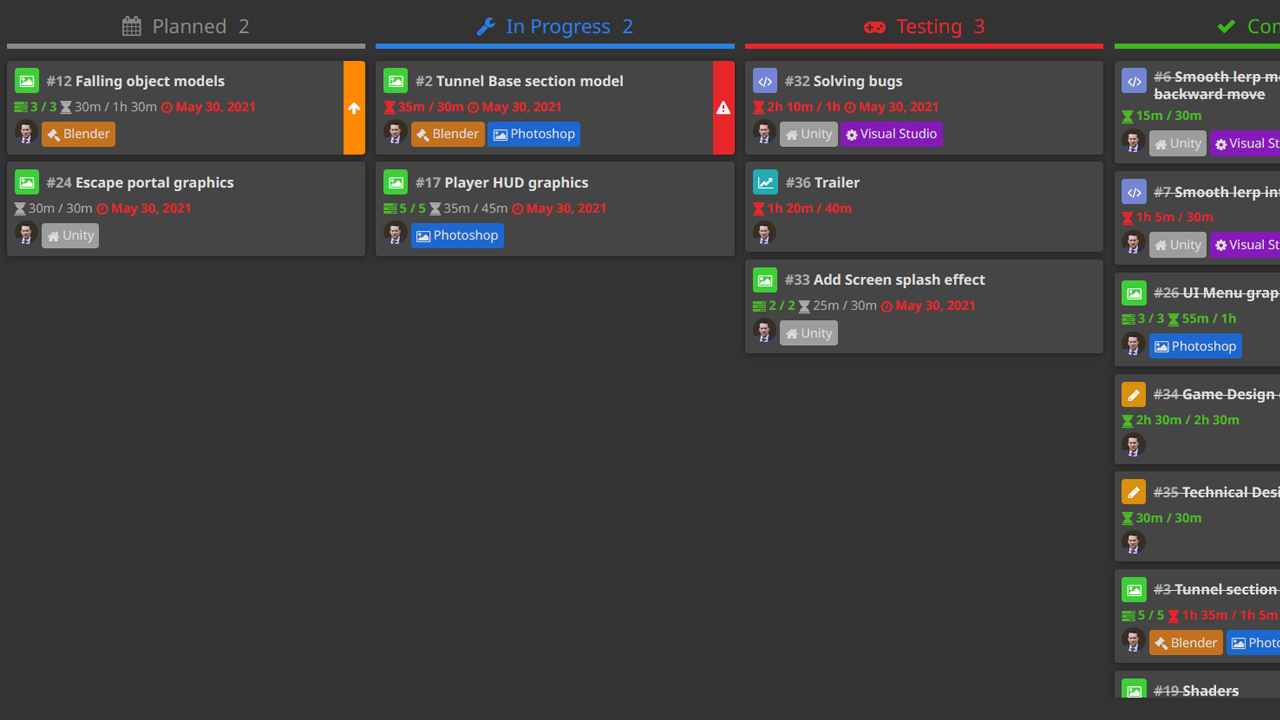Falling Memories
From concept to pitching vertical slice
Intent
Goal
Play At
Software
Developing a game concept to vertical slice, with design documents & pitch deck.
A vertical slice of the game to be pitched.
Skills improved
- Game & Tech Design Docs (MS Word)
- Planning production on vertical slice
- Time & task management (HacknPlan)
- Creating Pitch-Deck (MS PowerPoint)
- Video call pitching
- Live gameplay walkthrough
- Unity URP pipeline
- Shaders & Particle systems
- C# Programming
- Programming: Character controller, StateMachine, ...
- Blender 3D modelling & material bake
idea to vertical slice
The idea behind this project was to take a game idea, and bring it to a vertical slice that is ready to be pitched. All this following some necessary steps: Creating a High-concept of the idea, prototyping, planning out production, creating game design documentation while developing the game, creating a standalone demo (vertical slice), and building a pitch deck to present with.
The main goal: Learning the steps to support a professional game creation process.
Concept & Prototype
The idea, high concept and prototyping were up first.
Read: Game Prototypes I | Concept B
The prototype resulted in that more mechanics were crucial to creating a fun experience, but overall the better one to further develop with considerations to fun factor and scope-plausibility.
To add to the mechanics, I decided to not add new character mechanics, but enhance the
current ones by having them "cost" expendables or "reward" extra score for an action. I
made this choice to keep simplicity, while having the player more engaged through
micromanaging.
I did add more mechanics to the tunnel spawns, the player would now have to not only
avoid objects, but also distinguish between refills for expendables and avoid
stun-fields.
Design Documents
Important for every project: The documentation.
In order to align a team on the same page; We need documented art styles, design
decisions, technical conventions, and more. They need to be easily accessible and to the point,
so both old & new talents to the team can work independent without causing issues afterwards.
In my case, this was a solo-project on a very limited time budget. That meant I had to make the decision of keeping to a Game Design & Tech Design Document.
These documents are "alive" in a project. I created the first versions with basics such as conventions and the core gameplay before I started planning the production of the vertical slice. I'd be updating the documents as the project developed.
Download:
Game Design Document (1.2MB)
Planning
Before starting the vertical slice development, I had to plan in the production. For this, I used HacknPlan which is a nifty website for planning game production.
Planning itself took quite a bit of effort, and the prototype was very useful in providing insight what would take importance, what would be solved quickly, and what would take up more time. I mis predicted a few eventually, but it was a great learning experience on project planning.
In order to structure, I planned weekly based on production phases. In this case, production and polish.


Pitch deck & presenting
The pitch deck was made in PowerPoint, using footage of the game to create an interesting set of slides. Text kept to minimum, and I ensured a consistent and fitting template and colours. I focussed on the core mechanics of the game, its USP, and the goal.
Presenting happened through a video call. I used my pitch deck as screen share, and presented it
as it would be live-on-stage.
During the presentation I was given time to hold a quick demo play session; however this
changed into a play along with me giving commentary on what was happening.
Download:
Pitch-deck (48.2MB)